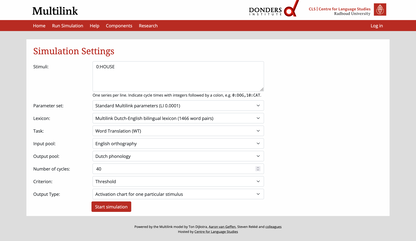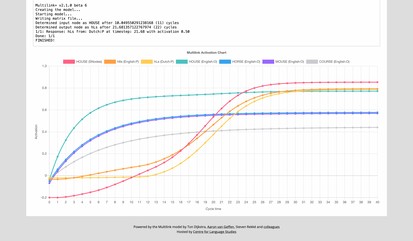Multilink
For my master's thesis project, I investigated how humans recognise and translate words in their mind.
In psycholinguistics, a common finding has been that bilinguals are significantly faster at translating words
that are similar or identicals between their languages. For instance, the English word TABLE and the Dutch word
TAFEL overlap in both their spelling (orthography) and pronunciation (phonology), and have the same meaning.
Often, this kind of words has some common history; hence, they are known as cognates.
Conversely, there are words that have some such overlap, but have a very different meanings entirely.
For instance, the English word ROOM and the Dutch word ROOM look identical, but the Dutch word means 'cream' instead!
While such words may look like friendly neighbours while translating, the resemblance is rather deceptive.
These so-called interlingual homographs are therefore commonly known as false friends.
In my thesis, I worked together with prof. Ton Dijkstra to model the recognition process of these kinds of words. This was done by fitting a symbolic neural network to corpora of word frequencies and a semantical network. For fitting, we integrated results from existing empirical research. This is called computational cognitive modelling.
Happily, the simulations from the resulting model exhibit very similar patterns to the empirical data, yielding high correlations with their experimental counterparts.
Aside from my thesis efforts, I developed a simple website for the model. This allows a wider audience to get familiar with the model, without having to be familiar with all its parameters or indeed programming code.


